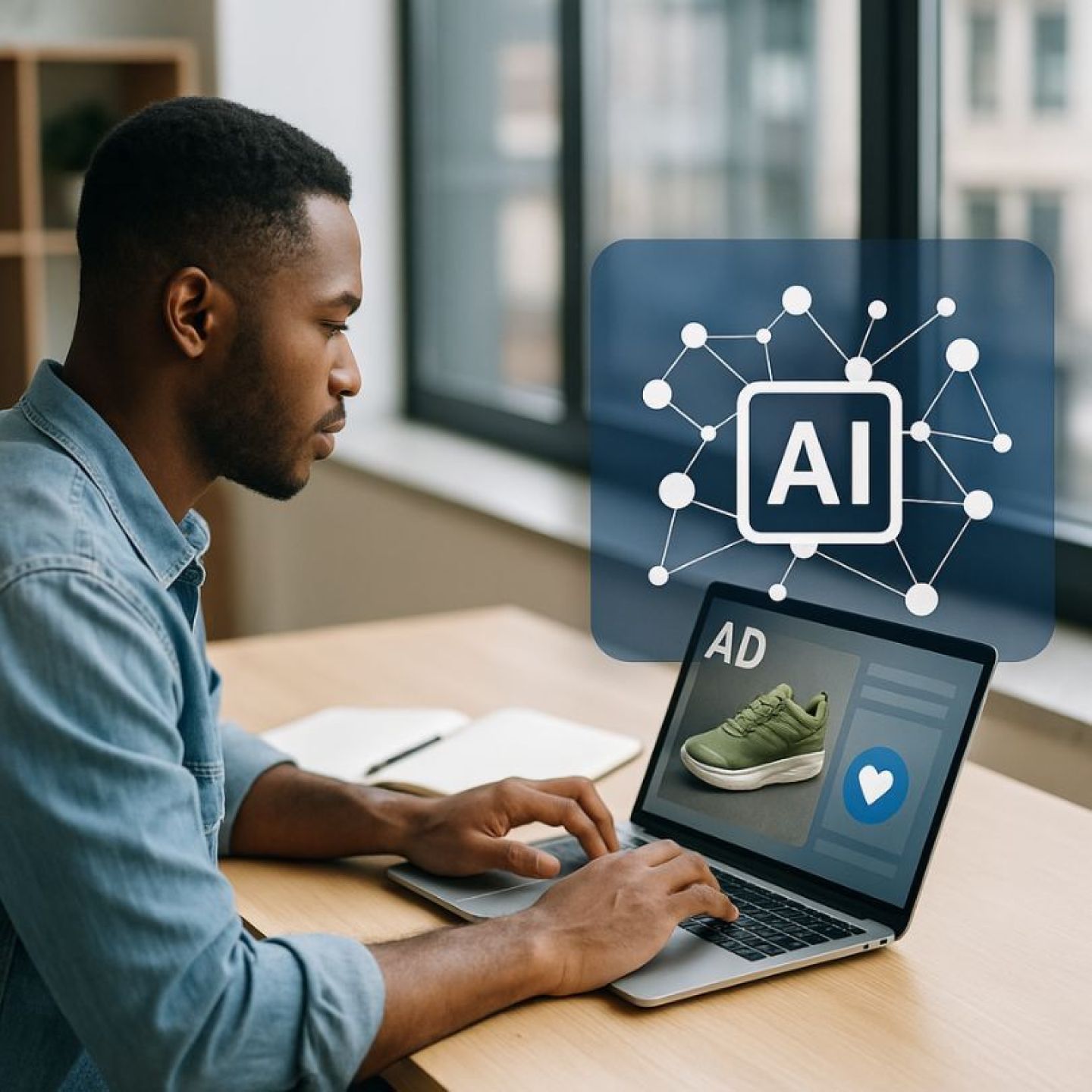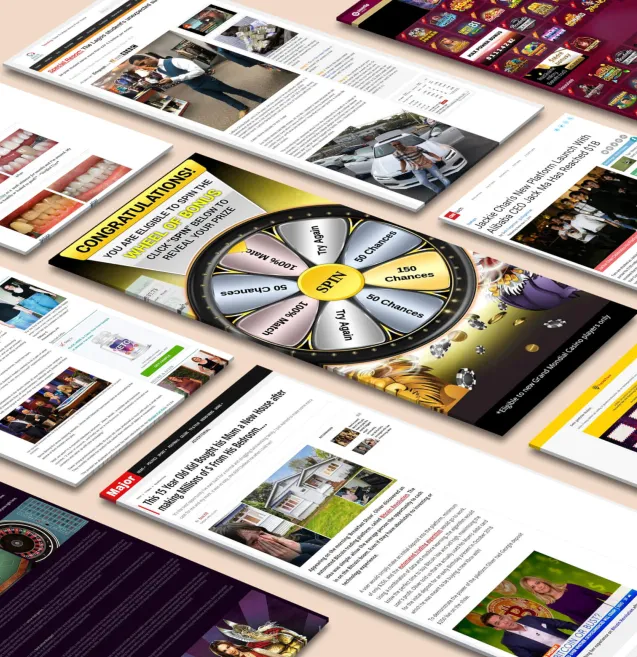
Our spy tools monitor millions of native ads from over 60+ countries and thousands of publishers.
Get StartedNative advertising has entered a new era of sophistication with AI-driven personalization. This groundbreaking technology transforms traditional sponsored content into dynamic, personalized experiences that resonate with individual users at an unprecedented level.
AI algorithms now power native advertising platforms, such as those offered by Anstrex, which analyze user behavior, preferences, and engagement patterns in real-time. These systems create highly targeted content that blends seamlessly with the host platform's organic content while delivering personalized value to each viewer.
The impact of AI in native advertising is remarkable:
This technological revolution has created a win-win scenario where advertisers achieve better results while users receive content that aligns with their interests and needs. The combination of AI and native advertising marks a significant shift from the traditional "one-size-fits-all" approach to a sophisticated, data-driven strategy that prioritizes personalization and user value. Such strategies are crucial in today's digital landscape, as highlighted in recent studies examining the effectiveness of these advanced advertising methods.
AI algorithms have transformed audience targeting by analyzing large amounts of user data, including:
These advanced algorithms create detailed user profiles by finding patterns and connections in the data. The system learns from each interaction, continuously improving its targeting abilities to provide personalized native ad experiences.
AI-powered segmentation offers significant advantages to native advertising campaigns:
The true strength of AI lies in its ability to find micro-segments - very specific audience groups with distinct characteristics. This detailed approach allows advertisers to create highly relevant messages that resonate with each segment's particular needs and preferences.
AI algorithms also adjust to shifting user behaviors in real-time, ensuring your targeting stays accurate as market conditions and consumer preferences change.
Dynamic Creative Optimization (DCO) is a game-changer for native advertising. It uses artificial intelligence (AI) to automatically create and change ad elements in real-time, making each advertisement more relevant to individual users.
DCO works by analyzing various data points to understand user preferences and behaviors. Based on this analysis, it generates personalized variations of ads that are most likely to resonate with each specific user.
Here are the main features that make DCO so effective:
A/B testing is an essential part of how DCO works. The system continuously tests different combinations of creative elements to see which ones perform best. It measures key metrics such as click-through rates, conversion rates, time spent on the ad, and user interaction patterns.
Real-world examples show just how powerful DCO can be. An e-commerce platform that implemented DCO saw a 45% increase in engagement rates by dynamically changing product images and descriptions based on user browsing history. Similarly, a travel company achieved three times higher conversion rates through personalized destination recommendations and pricing displays.
DCO offers several benefits for advertisers looking to improve their native advertising campaigns:
Dynamic Creative Optimization is a powerful tool for enhancing ad relevance in native advertising. By leveraging AI technology and continuously optimizing creative elements through A/B testing, advertisers can deliver personalized experiences that drive higher engagement and conversion rates.
Predictive analytics transforms native advertising by uncovering patterns in user behavior before they become obvious. Machine learning models analyze past data to forecast:
These insights enable advertisers to create campaigns that resonate with users based on their future behavior rather than solely relying on their past actions. For example, a retail brand may identify early signs of interest in sustainable fashion and automatically modify its native ad creative to emphasize eco-friendly product lines.
The strategic use of predictive analytics spans across various stages of a campaign:
Advanced machine learning models can now take into account complex factors such as weather patterns, local events, and economic indicators to improve targeting accuracy. This analysis from multiple dimensions helps brands deliver native ads that feel less like predictions and more like perfectly timed messages.
Contextual relevance is crucial for successful native advertising campaigns. AI algorithms analyze the content, tone, and style of the hosting platform to create ads that blend naturally with the surrounding environment.
Key Elements of Contextual Alignment:
AI-powered systems scan website content in real-time, identifying optimal placement opportunities based on:
The technology goes beyond basic keyword matching by understanding semantic relationships and user intent. For example, a sports-related native ad appearing within a fitness blog creates a natural flow, while a tech product advertisement seamlessly integrates into a digital news platform.
This intelligent content matching reduces banner blindness and ad fatigue. Users encounter advertisements that complement their current browsing experience, leading to higher engagement rates and reduced bounce rates. AI's ability to maintain this delicate balance between promotional content and platform authenticity transforms native advertising from intrusive interruptions into valuable content additions.
Real-time optimization transforms native advertising campaigns into living, breathing entities that adapt instantly to user responses. AI-powered systems track critical performance metrics:
These metrics feed into sophisticated algorithms that automatically adjust campaign elements for peak performance. The system might detect that a specific ad variant performs exceptionally well with mobile users during evening hours, triggering immediate adjustments to capitalize on this insight.
Dynamic Adjustment Capabilities:
AI systems can identify performance patterns invisible to human analysts, making micro-adjustments across thousands of data points simultaneously. This granular optimization level enables advertisers to maintain peak campaign performance 24/7, responding to market changes and user behavior shifts as they happen.
The real-time nature of these optimizations eliminates the traditional lag between data collection and campaign adjustments, resulting in significantly improved ROI and campaign effectiveness.
Brand safety remains a critical concern in native advertising. AI-powered tools now serve as vigilant guardians, protecting both advertisers and audiences from fraudulent activities and inappropriate content placement.
AI systems can detect sophisticated fraud attempts by analyzing multiple data points simultaneously. These tools examine factors like unusual click patterns, suspicious traffic spikes, and irregular engagement metrics to identify potential threats.
Contextual Analysis: AI evaluates the semantic meaning of content surrounding ad placements
Sentiment Scoring: Automated assessment of content tone and appropriateness
Visual Recognition: Analysis of images and videos to ensure brand-safe environments
These AI-powered safety measures create a protective shield around your native advertising campaigns, ensuring your brand message appears only in suitable contexts while maintaining the authenticity of user engagement.
The rise of AI-driven personalization in native advertising brings significant ethical challenges that demand careful consideration. Privacy concerns stand at the forefront of these challenges, as AI systems collect and process vast amounts of personal data to create targeted advertising experiences.
AI algorithms can perpetuate existing biases when trained on limited or skewed datasets. This algorithmic bias can lead to discriminatory ad targeting and unfair representation across different demographic groups.
Companies can build trust through privacy-focused native ads that respect user preferences while delivering personalized experiences. This includes:
"We believe in creating advertising experiences that respect individual privacy while delivering relevant content to our audiences" - A principle increasingly adopted by leading advertisers
The integration of ethical considerations into AI-driven native advertising strategies creates a balanced approach between personalization and privacy protection. However, it's also essential to explore innovative strategies such as video marketing, which can provide a more engaging way to deliver personalized content while respecting user privacy.
The world of native advertising is going through a major change thanks to generative AI technologies. With these advanced systems, it's now possible to create personalized ad content on a large scale, tailoring messages, visuals, and tones to fit each individual user's preferences with incredible accuracy.
The rise of proactive advertising systems represents a significant shift from reactive strategies to anticipatory approaches. These systems have the ability to:
Modern native advertising platforms are incorporating features that reflect growing consumer priorities:
The combination of quantum computing with existing AI systems holds the promise of even more advanced targeting capabilities. These cutting-edge systems will be able to analyze complex user behavior patterns and deliver highly relevant advertising experiences that seamlessly integrate with organic content consumption habits.
AI-driven personalization has transformed native advertising, benefiting both advertisers and users. Advertisers gain from better targeting, higher returns on investment, and the ability to optimize in real-time. Users enjoy relevant content that enhances their online experience instead of interrupting it.
This shift in native advertising due to AI personalization is a major change in digital marketing strategy. It allows brands to connect with their audience in meaningful ways while addressing privacy concerns and upholding ethical standards.
Want to learn more about AI-powered native advertising?
The future of advertising is personalized, contextual, and powered by AI - start your journey toward smarter native advertising today.
Receive top converting landing pages in your inbox every week from us.
How-To
Native ads can do more than drive clicks—they can build long-term brand loyalty. Learn how to use authentic storytelling, strategic placement, and audience targeting to strengthen trust during year-end campaigns. Discover how subtle, value-driven messaging keeps customers engaged beyond the holidays. Ideal for marketers aiming to turn seasonal buyers into loyal brand advocates.
Marcus Chen
7 minDec 15, 2025
Must Read
As third-party cookies fade away, contextual targeting is making a powerful comeback. Learn how to leverage native ads that align with user intent and content relevance to maintain high engagement and conversions. Discover modern tools and tactics that make cookie-free targeting both precise and scalable. Ideal for advertisers seeking privacy-friendly ways to drive performance in 2025 and beyond.
Liam O’Connor
7 minDec 9, 2025
Recently Updated
Native ads can make or break your holiday marketing success. Explore how to evaluate your recent campaigns and identify what worked—or what fell short—with native advertising. Learn key optimization tactics to boost engagement, strengthen audience trust, and increase conversions in future promotions. Ideal for marketers aiming to refine their ad strategies after the holiday rush.
Elena Morales
7 minDec 1, 2025




